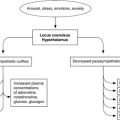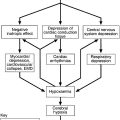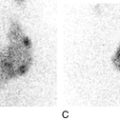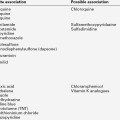CHAPTER 3
Quality aspects of laboratory medicine
CHAPTER OUTLINE
INTRODUCTION
It was emphasized in Chapter 2 that every step in the process, from the ordering of the investigation, through collection of the specimen(s) required, their transport to the laboratory and analysis, to the delivery of a report to the clinician, is vital in ensuring that results of investigations are used appropriately. Interwoven throughout each step is the requirement to ensure the quality of the whole process. Chapter 2 has already discussed the need to minimize analytical variation through the use of processes to reduce imprecision and bias. The use of standard operating procedures has also been alluded to, but this chapter will expand on the use of laboratory standards to maintain quality.
WHAT IS QUALITY?
Quality is difficult to define, and may be considered to be ‘doing the right test, for the right patient, at the right time for the right reason’, but may equally be defined as ‘adhering to stringent processes in order to complete the task’. Ultimately, perhaps the question to ask is how to assess the quality of a laboratory service.
QUALITY STANDARDS
Quality assurance
Clinical biochemistry laboratories operate extensive quality assurance procedures to ensure that the results that they produce can be relied upon to support clinical decision-making. They include internal quality control (IQC) schemes, for example involving replicate analysis of clinical samples and the repeated analysis of reference samples of identical composition, and external quality assurance (EQA) schemes involving the analysis of identical samples by a large number of laboratories.
The measurement of IQC samples allows a prospective estimate of the precision of the analyses that are being performed. The frequency of measurement of such controls may depend upon each laboratory’s workload and the type of analysis undertaken. For example, it is not unusual to run quality control material at the start and the end of a sample batch measured by enzyme-linked immunosorbent assay (ELISA).
The measurement of EQA samples provides laboratories with a retrospective view of the accuracy of their measurements and the consistency of any bias that may be present. The data can be invaluable when troubleshooting possible assay problems, by allowing the laboratory to compare their result with both the reference value (if available) and the method-specific mean. The review and interpretation of EQA reports is an important skill for laboratory personnel to develop because of the variety of ways in which different EQA schemes choose to present their data. (Examples may be accessed via the website addresses of the various EQA providers included in Further reading, below.)
Not only the analysis itself, but also the interpretation of the result should be subjected to quality assurance: there exists a peer-reviewed EQA scheme for interpretative comments.
Reviewing quality assurance procedures is an essential part of the audit of laboratory performance (the assessment of overall performance with regard to the appropriateness of the use of tests, the interpretation of their results, adherence to standard procedures, cost-effectiveness etc.). Laboratory data should also be included in the medical audit, in which the effectiveness of all aspects of clinical care is examined. The ultimate test of the performance of laboratory data is provided by the clinical outcome when this has been determined, in whole or in part, by those data.
Regulation of laboratories
External regulation of laboratories has evolved over some time to include every aspect of the laboratory service. Independent regulatory bodies are empowered to award accredited status to laboratories meeting stringent standards and to fail to award or remove accreditation from laboratories which are found to have serious failings at inspection. Throughout the world, there are several organizations that fulfil this role: International Standards Organization (ISO), United Kingdom Accreditation Service (UKAS) and the Division of Laboratory Services and Standards in the USA, to name but a few. Their main aim is to ensure a laboratory’s quality and competence to perform specified tasks. It is important to note that all parts of the laboratory are inspected, including the environment in which the laboratory is based. Very dilapidated buildings (in which pathology departments are sometimes located) will be a cause of concern for the inspectors, as it may reflect the low priority given to laboratories within a wider healthcare setting, such as in a hospital.
Within the UK, for example, the current list of standards against which laboratories are judged comprises almost 60 pages. The broad areas covered are listed in Box 3.1. It is worth noting that the analytical process itself is just one out of eight categories examined by such an inspection.
Quality management systems
A system of ‘Quality Management’ is an all-encompassing term used to describe the steps a laboratory may take to maintain current procedures and to establish continual service improvement via quality objectives.
The majority of laboratories in the UK will have a designated Quality Manager, either exclusively within their own discipline or as part of a multidisciplinary team. The development of web-based document management systems (e.g. QPulse, i-Passport) has enabled laboratories to greatly improve document control and to track review dates, changes and the number of printed copies in circulation. Complete written procedures should be in place for all tasks performed in a laboratory. Manufacturers are obliged to publish ‘Instructions for Use’ with each reagent supplied that contains the majority of worthwhile data. These procedures, however, form only part of the process, as the essence of a quality management system is that it documents what should take place within the laboratory in its entirety. All members of laboratory staff should be familiar with the quality management system, understand the requirement for such a system and the need to maintain the documents within it. Indeed, it is the effective implementation of the system, and adherence to it, that is likely to lead to quality improvement. Monitoring the effectiveness of the system is achieved by audit (see below) and by reviewing processes in a regular basis.
Many laboratories try to minimize the amount of printed material generated, owing to ever greater space and storage constraints. Improved reliability of information technology and the need to minimize waste are also important driving factors towards operating a paperless Quality Management system.
Personnel
When contemplating quality, staffing issues may not immediately spring to mind. Staff are, however, the most valuable assets of any laboratory. Staff morale and continuing professional development play a vital role in a ‘good’ quality laboratory. Education and training of all levels of staff within the laboratory ensures that their knowledge and understanding of laboratory science is current and up-to-date. The competence of staff undertaking laboratory tasks should be documented and regularly reviewed. Formal individual review meetings are recommended to assess training needs and to promote further development.
Premises and environment
The control of access to laboratories and the efficient use of heating, lighting and space are important considerations when evaluating a suitable working environment. Health and safety aspects of the premises and environment need to be reviewed, both in terms of staff safety (e.g. lone working, risk of slips and trips, adequate fire plan) and general laboratory safety such as electrical issues (e.g. overloaded sockets, regular testing of electrical appliances, use of extension cables) and chemical safety (e.g. appropriate use of material safety data sheets and adequate storage facilities for acids, controlled drugs and toxins). The latter category may also include awareness of laboratory waste disposal, which will encompass both biological and chemical waste. In the UK, for example, NHS Trusts have financial incentives related to recycling and alternative methods of disposal other than incineration.
Information systems
The development of sophisticated information systems has had a huge impact on numerous aspects of laboratory medicine. Pre-analytical improvements include the ability to display relevant test information and sample requirements via electronic requesting. Real-time availability of results and the possibility of report acknowledgement are also areas revolutionized by information systems.
Information systems affect the way in which laboratories communicate with their users. Many laboratories now maintain an electronic laboratory handbook, as well as a paper copy. The advantages of an electronic version are that it reduces the cost of production (and paper waste) and it is easier to maintain and keep up-to-date. Patient information leaflets and testing protocols such as dynamic function tests can easily be accessed via hyperlinks, if available.
The increasing use of e-mail has allowed laboratories to communicate electronically with end-users, although security must be assured before sending patient identifiable data. Future developments will increasingly allow patients to use this or other electronic means to access their own results directly. In the UK, some patient groups, such as those with kidney disorders, already have electronic access to selected results via a nationally organized database.
The integration of laboratory information systems with electronic patient records in both primary and secondary care has revolutionized the delivery of pathology results over the past decades. The ability to view test results remotely and securely has improved the safe delivery of healthcare, especially in non-traditional settings, and has expedited the move of care from hospitals to within the community.
Evaluation and audit
The use of audit tools in laboratory medicine is widespread. During formal assessment of the laboratory’s service, a combination of vertical, horizontal and examination audits are used to assess compliance with the quality standards set. Vertical audits generally look at the sample journey throughout the entire testing process, from test requesting and phlebotomy (if possible), to report generation and receipt by the requestor. Actual events are compared with written procedures to check adherence. A failure to follow any stated procedure may trigger a horizontal audit of that particular part of the testing process. A rather extreme example would be that during the course of a vertical audit, it is discovered that no quality control material was run during analysis of a particular analyte such as glycated haemoglobin; examiners may act upon this information and perform a horizontal audit of all recent analytical batches of glycated haemoglobin to see if this was an isolated occurrence or if there was a systematic failure to follow the stated procedure.
Ensuring that the audit cycle is complete is critical for continued quality improvement. Re-auditing previous processes, in which highlighted deficiencies have forced a change in practice, is vital to ensure that the changes in practice have resulted in the anticipated improvements. Figure 3.1 shows the key steps to completing an audit cycle.
FIGURE 3.1 The complete audit cycle. The process can be started at almost any point of the cycle, but often the first task is to identify an area of interest and then determine standards against which to conduct an audit.
Clinical audit is another key aspect of evaluating laboratory effectiveness. Clinical audit plays an important role in trying to assess the impact of laboratory testing on patient pathways and outcomes. Ultimately, the role of the laboratory is to improve the healthcare of patients and, although difficult to measure, the contribution of laboratory testing should be documented. Collaboration with other clinical disciplines allows the laboratory to forge vital relationships with clinicians and other staff within the healthcare environment.
The third type of evaluation that the laboratory should undertake is an assessment of user satisfaction. It is important to engage all users of the laboratory service, as each different group may have different needs and requirements. Clinicians, nurses, other healthcare professionals and other laboratories should be asked to contribute. All aspects of the service can be covered from the users’ opinions on the judicious use of interpretative comments to turnaround times and phlebotomy services. User satisfaction surveys may eventually be circulated to patients (who may be the true end-users of the service), especially those with long-term chronic disease states (e.g. diabetes mellitus, chronic kidney disease), as they take greater ownership of their health and treatment targets. Box 3.2 gives a list of the other areas covered by questions commonly seen in user surveys.
CLINICAL QUALITY INDICATORS
Laboratories are generally adept at maintaining quality standards within their own environment; however, the need to determine and measure objectively their clinical effectiveness is growing, owing to increasing pressure on limited resources. Clinical quality indicators have recently been developed to aid in this process. The key to the use of these indicators is that they must be easily measureable and that the results can been collected in a timely manner (a yearly review would be of limited use in highlighting errors and improving performance promptly). Several quality indicators can be brought to mind, but if the mechanism for capturing the necessary data is too demanding or difficult to achieve, then the whole process becomes meaningless.
Quality indicators can fall into two broad categories: those that are designed to highlight improvement and those that are used to capture a possible deterioration in standards. An example of each may include the use of external quality assurance to show improving assay precision and the monitoring of turnaround times from emergency departments to detect peaks and troughs in service provision. Turnaround times in particular, can be an area where the laboratory and requesting clinicians can have differing views, with clinicians considering turnaround time to be ‘vein-to-brain’ time rather than from receipt of sample in the laboratory to a clinically validated result. Table 3.1 lists other potential quality indicators that laboratories may be able to use to monitor their own performance.
TABLE 3.1
Examples of potential quality indicators
| Category | Example quality indicator |
| Preanalytical | Investigation strategies and protocols Introduction and maintenance of reference (critical) change values |
| Analytical | Matching analytical performance to clinical requirements |
| Postanalytical | Data interpretation Addition of appropriate further tests |
| Direct clinical services | Patient/ward interventions, e.g. review of patients with metabolic disease, electrolyte or fluid balance problems Participation in multidisciplinary team meetings |
| Education | Undergraduate and postgraduate teaching; participation at hospital-wide events such as Grand Round meetings; newsletters |
Clinical effectiveness
In the context of laboratory medicine, this may be perceived as the laboratory’s ability to introduce new tests and to dissuade clinicians from using tests deemed to be obsolete. Clinical biochemists may be involved in the development of specific testing protocols in Emergency Departments, for example, or in the interpretation of data in complex cases. Another way in which laboratories contribute to effective clinical care, is the identification of artefactual causes of altered biochemical analytes, such as the effect of thrombocytosis on potassium concentration. The implementation of national guidelines and the adoption of agreed testing strategies or more precise analytical methods (such as the measurement of creatinine by enzymatic methods), are all examples of ways in which the clinical effectiveness of laboratories has been improved.
Key performance indicators
In an attempt to objectively assess the quality and effectiveness of predominantly pre- and postanalytical processes within the laboratory, the Royal College of Pathologists in the UK has established Key Performance Indicators. These suggested standards cover a wide range of areas, from the percentage of staff in training to the speed at which a laboratory can respond to a request for clinical advice (what defines clinical advice may be a contentious issue). Table 3.2 lists some of the other additional performance standards suggested by the Royal College of Pathologists. These are still in their infancy and some will require further clarification. However, they do provide an excellent basis on which a laboratory can assess its current performance. In order for these key performance indicators to have an impact on commissioning patterns and thereby possibly reward the best-performing laboratories, each participating laboratory should be expected to publish some of their results on a regular basis, thus allowing comparison with their peers.
TABLE 3.2
Some key performance indicators recommended by the UK Royal College of Pathologists
| Category | Performance standard and method of measurement |
| Training | 15–30% of the biomedical scientist, clinical scientist and medical staff should be in training posts |
| User surveys | The laboratory should include patients in the annual user satisfaction survey |
| Turnaround times | The percentage of investigations from A&E to be completed within 1 h. Target: 90% from April 2014 |
| Results communication | The percentage of critical results phoned to the requesting clinician within 2 h of availability. Target: 97% by April 2014 |
Demand management
In the past, clinicians were often allowed unrestricted access to all available assays within the laboratory, but as costs increase, test repertoires expand and undergraduate training in laboratory medicine decreases, laboratories now find themselves attempting to manage the increasing demand placed on them. Considerable work has been done to ascertain sensible repeat testing intervals for analytes which are too frequently requested in secondary care. Some examples include bone and liver profiles, vitamin D and thyroid function testing. Electronic order requesting enables the laboratory to communicate warning messages to the clinician prior to further repeat requesting and also to educate the users about the most efficient use of laboratory services. Another form of demand management may involve the manual vetting of requests from within the laboratory. This may be for specialist tests that are referred to other laboratories or for analytes that have a specific clinical role, such as tumour markers. Vetting performs a dual purpose; first, it enables the lab to control costs and second, it allows the lab to open a dialogue with the requestor regarding the need and suitability of the test.
EVIDENCE-BASED CLINICAL BIOCHEMISTRY
The later years of the 20th century saw the establishment and development of the concept of evidence-based medicine, in essence the use of the best available data from robust clinical studies to inform the management of patients, including diagnosis, prognosis and treatment. This has led to the promulgation of the concept of evidence-based clinical biochemistry (and evidence-based laboratory medicine in general) in which, for example, the relationship between investigations and clinical outcomes is rigorously analysed, using tools such as likelihood ratios (see p. 19), to determine which investigations are the most appropriate (in terms of being valid and informative) in individual clinical situations and evaluating their subsequent use.
In evidence-based medicine, the gold standard for providing evidence is the systematic review of evidence adduced from clinical trials, preferably randomized and double blinded. Such reviews should be designed to minimize bias, random errors and confounding. Systematic reviews may include meta-analysis – a statistical analysis of the results from a series of independent studies designed to produce a single statement about outcome, whether it be the efficacy of a particular treatment or the value of a particular diagnostic investigation.
Although the number of systematic reviews of diagnostic investigations published annually is increasing, there are none for many well-established biochemical tests, and there is no requirement to conduct studies of the efficacy and validity of new tests before they are introduced to the market, as there is with therapeutic agents. For example, numerous new tumour markers have been developed in recent years, but for many, there is only limited evidence (and only in specific contexts) of their clinical value. The context in which an investigation is used is an essential consideration. For example, there is no doubt that the measurement of prostate-specific antigen (PSA) is of value in monitoring the response of patients with prostatic cancer to treatment, but basal values have little prognostic significance and there remains no definite evidence that screening older men for prostatic cancer by measuring PSA has any effect on outcome.
Evidence-based clinical biochemistry is gathering momentum. It starts with the technical evaluation of a test and encompasses the assessment of diagnostic performance and clinical utility, as discussed in Chapter 2. One of its important products is the development of guidelines for the investigation of patients with specific conditions. But just as there is continued clinical surveillance of drugs after they have been introduced to the market (resulting, in some cases, in their later being withdrawn or having their licences altered), so the impact of guidelines and other products of evidence-based laboratory medicine must be reviewed to ensure that they are appropriate and effective, and remain so with the passage of time. The process of clinical audit – defining standards; examining processes against these standards; identifying deficiencies; modifying the processes to correct them, and repeating the cycle to check for improved performance – is fundamental to this.
POINT-OF-CARE TESTING
There is a current trend to deliver a more patient-centric service with some laboratory testing taking place within the community, at point-of-care. This desirability, under some circumstances, to provide biochemical services at the bedside or in the clinic or doctor’s surgery, has led to the development of techniques and analytical instruments that can be used reliably by individuals who do not necessarily have rigorous laboratory training. Examples include hydrogen ion and blood gas analysis in intensive therapy units, principally as an aid to the management of patients on ventilators; dipstick analysis of urine samples; blood glucose measurements on hospital wards and in patients’ homes, and bilirubin analysis in neonatal intensive therapy units. The advantages of such testing include the rapid availability of results at the location where management decisions are made and an ability to perform the test frequently; both these facilitate rapid responses to changes in the patient’s condition. Certain sources of error may be eliminated (although care must be taken not to introduce others) and there may be financial savings, for example in relation to the transport of specimens or of patients; however, the cost per test is frequently much higher for point-of-care tests (PoCTs) than for the central laboratory.
This is not a new concept. In Victorian times, physicians would perform simple pathological tests at the bedside and it was the increasing complexity of the tests that led to the setting up of centralized laboratory facilities. Point-of-care testing offers considerable advantages over laboratory-based testing under some circumstances, as is apparent from the examples cited above. However, it is important that the tests and instruments are reliable; that only staff who have been trained to use them are allowed to do so; that the results are subject to appraisal through a quality assurance scheme (preferably supervised by a clinical biochemist) and that there is adequate skilled technical and analytical back-up, should problems arise. Laboratories are expected to be at the forefront of these developments and work with the PoCT user to establish a set of quality standard analogous to those used in the main laboratory. The international standard, ISO 22870, sets out the specific standards that should be met when such testing takes place within a hospital environment.
There are however, ongoing clinical governance issues regarding the use of PoCT. Two key areas of concern are the assimilation of the PoCT result into the patient record and the need to ensure adherence to rigorous testing processes (a complete audit trail). As an example, the latest blood glucose meters available on the market have the capability of connecting to both laboratory and hospital information management systems. These meters control access by requiring unique identification of individual users. Additionally, connected meters can be controlled remotely from the laboratory to ensure that the meter has had quality control checks prior to measurement of patient samples. Remote access to these meters can also ensure that use by untrained individuals is prevented.
These developments are excellent examples of the progress that has been made by manufacturers in this area. The need to establish good working relationships with the manufacturer and colleagues that use the system is vital to ensure success.
As the use of PoCT devices becomes more prevalent, regulation will become stricter and it is envisaged that the laboratory will take a greater role in their provision and management, possibly through service level agreements with community practitioners.
CONCLUSION
Laboratories are obliged to provide a good-quality service, which should be independently assessed and regulated. As quality standards have evolved, so has the need to include inspection of procedures to cover the entire sample journey, from phlebotomy to receipt of the final report. Laboratories should review the needs of their end-user, be it clinician, nurse or patient and try to adapt their service accordingly.
The need to monitor the clinical effectiveness of laboratories to demonstrate continuous quality improvement and better patient outcomes has resulted in the development of clinical quality indicators. These indicators should be used to provide laboratories with sufficient data to identify areas of good practice and areas where further improvement is necessary and to promote a culture where continuous quality improvement is integrated into routine activity.
FURTHER READING
Barth J. Clinical quality indicators in laboratory medicine. Ann Clin Biochem. 2012;49:9–16.
National External Quality Assurance Scheme, UK NEQAS. www.ukneqas.org.uk.
Oxford Centre for Evidence-based Medicine. http://www.cebm.net/?0=1162.
The website of the Oxford Centre for Evidence-based Medicine. This page illustrates the use of likelihood ratios to modify diagnostic probabilities, but there are many other useful pages.
Randox External Quality Assurance Scheme, RIQAS. www.riqas.com.
United Kingdom Accreditation Service. www.ukas.com.
Welsh External Quality Assurance Scheme, WEQAS. www.weqas.com.








